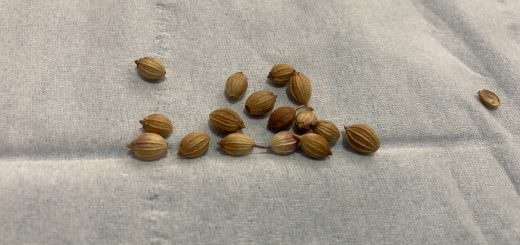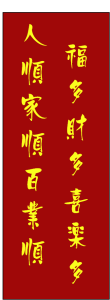How to sharpen knife
I am not an expert in knife sharpening, but here are some tips that I can share and that is what I do.
Whetstone
Use a whetstone, and they usually comes with 2 sides, a rough and smooth side. The Japanese ones are pretty good, but a little more expensive. The surface should be flat before sharpening. (I have read that you could use another whetstone to rub over another to make the surface flat, but most of our kitchen likely to have only 1 piece of the whetstone) Soak the stone in water for 15 mins before use. Put a wet cloth beneath the stone to prevent slipping during sharpening.
Stoke
Each stoke should fully utilize the full surface of the stone to maintain the flatness of the stone by wearing it out evenly, and each stoke sharpen the entire knife blade. Hence holding the knife handle on the right hand and sharpening the right side of the blade, I will start with the edge of the knife away from the handle (ie the tip of the knife), place the blade on the stone nearest to me, with the cutting edge pointing inwards towards me, and with a smooth motion, push the knife away from me, sliding the knife so that it will end at the end of the stone with the other end of the blade (heel) on the stone, thereby making sure the full blade has contacted the stone once. Apply a slight and constant pressure by pressing the knife on the stone during the stroke. Keep the angle of the blade on the stone constant and this is very important. I do not pull the blade back on the stone to have a forward backward motion, instead I lift up the blade and start the stoke again from the beginning. Some may recommend pulling back, but I felt that pulling the blade back is like a shaving blade shaving the stone surface, and if any tiny unevenness on the stone surface or any particles (my stone is not the top grade stone used by Japanese chef) may risk blunting or chipping the cutting edge. You can repeat the stoke on the same side for X times, but make sure the same X times is repeated on the other side. The number of times to repeat depends on the condition of the blade. Typically I will do 20 times each side, and then 20 times each side again, and then 10 each side, then 5 each side, then 4,3,2 and 1. (More repetition if the knife is very blunt to start with). Drip some water on the stone when it gets dry. When doing it for the other side of the blade, you will have to do the reverse stroke, ie pulling back action, if you are holding the handle and turning the knife over. For cleaver, as the blade is big, I will hold the top of the blade instead, and when doing it for the other side, I will flip the knife around, ie the handle is pointing away from me, and I could continue to do the same outward stroke. Doing it with the same direction and same stroke ensure same pressure and angle control on both side.
Angle
Next, the angle to use depends on the thickness of the blade. Thicker blade can be sharpened with bigger angle, while smaller angle can be used for thinner blade. You will need some personal judgment here, typically you will only need to have 1-2mm of the cutting edge of the blade to be in contact with the stone (ie when you look at the side of the blade, you will see 1-2 mm of beveled edge). The knife should also already have a beveled edge when it is new, you should follow the same angle when sharpening it. A typical cleaver can be sharpened at about 20 degrees, (taking 90 degrees as perpendicular, halving it and then halving it and reduce further slightly. I always sharpen my knife with 2 angles, first with an angle as described using the rough side of the stone, and then honing with a slightly larger angle +5 more degrees ie very slightly, on the smooth side of the stone. At this honing stage, do not apply pressure, just do the stroke gently.
Cleaning
Finally cleaning the knife sharpened edge with a sponge or cloth by pinching the blade and slide. This should remove any metal or the stone particles on the blade.
Testing
Sharp knifes cuts through vegetables item effortlessly without much pressure. Eg cucumbers or garlic, and you should be able to slice them thinly without slipping by a downward action. They cuts through meat easily with a slicing motion without the meat wobbling around as you slice.











 Total Users : 443825
Total Users : 443825 Views Today : 22
Views Today : 22 Total views : 1677637
Total views : 1677637